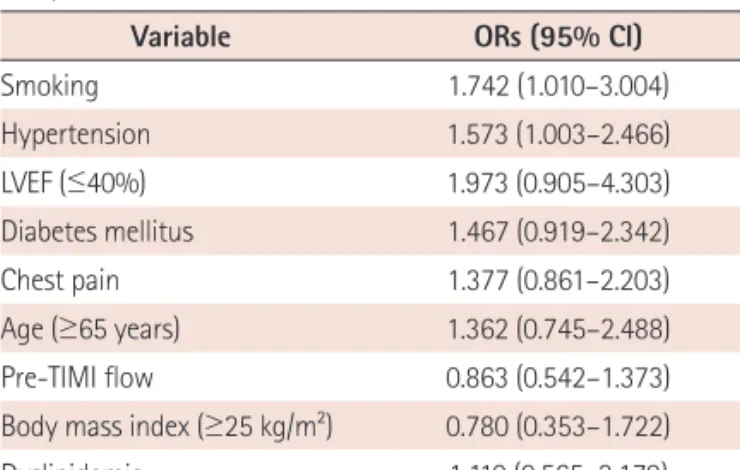Korean Circulation Journal
Introduction
Ischemic heart disease is the second leading cause of death in Korea,
1)and smoking has been recognized as a major risk factor.
2)Within the past two or three decades, female smoking habits have become similar to those of males. The steep rise in prevalence of smoking among women is expected to continue, while the preva- lence of smoking among men is expected to decrease. Systematic
Print ISSN 1738-5520 • On-line ISSN 1738-5555
Impact of Smoking on Clinical Outcomes in Female Patients with Acute Myocardial Infarction
Yun Ah Jeong, MD 1 , Myung Ho Jeong, MD 1 , Hae Chang Jeong, MD 1 , Youngkeun Ahn, MD 1 , Young Jo Kim, MD 2 , Chong Jin Kim, MD 3 , Myeong Chan Cho, MD 4 , and
Other Korea Acute Myocardial Infarction Registry (KAMIR) Investigators
1
Department of Cardiovascular Medicine, Chonnam National University Hospital, Gwangju,
2
Department of Cardiovascular Medicine, Yeungnam University Hospital, Daegu,
3
Department of Cardiovascular Medicine, Kyung Hee University Hospital, Seoul,
4
